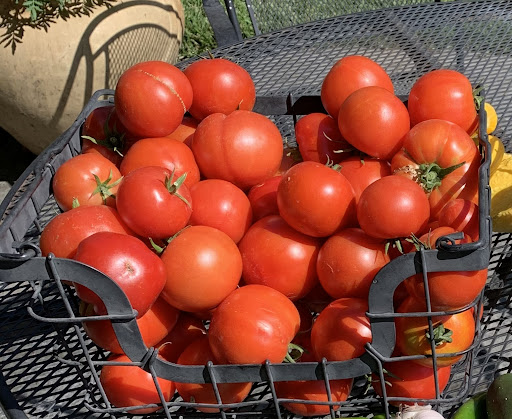I share some select product recommendations and this page contains affiliate links. If you take action (click on the link and purchase the product), I will earn some loose change. I hope you take advantage of my recommendations. You do not pay a higher price. – Jeffrey McLain
Everyone wants to make money as a farmer in their backyard. Yes, there are ways to make money growing food. Achieving financial success through farming is a universal aspiration, yet not everyone has access to a high income market garden. Regardless of your gardening expertise, the prospect of making money by cultivating your own food is within reach. Before you consider parting ways with your day job, let me elaborate.
In a world that increasingly values sustainable living and locally sourced produce, the notion of earning money through homegrown sustenance has evolved into an exhilarating and viable endeavor. When I say “make money,” I’m not referring solely to selling your harvest; rather, it encompasses the satisfying act of growing and consuming your own food, thereby reducing reliance on store-bought produce. Given the rising costs of groceries, cultivating your own food brings numerous advantages. While it may not entirely sustain your family year-round, it certainly allows for significant savings.
Whether you’re a seasoned gardener or just starting to embrace the soil beneath your fingertips, this blog post serves as your guide to transforming your green thumb into an income source. Let’s delve into the possibilities!
Selecting Perennial Crops
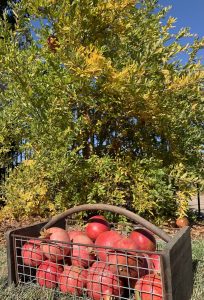
Embarking on the path of turning your gardening passion into a profitable venture begins with a thoughtful selection of the crops that will thrive in your garden. This initial step is not just about planting; it’s a strategic decision that can significantly impact your success in making money through food cultivation.
Consider focusing on high-demand crops that are perennial favorites among consumers. These might include sought-after fruits like berries or trendy vegetables such as heirloom tomatoes. Specializing in crops with a consistent market demand provides a reliable foundation for your business. Every garden is different and so is every grower. Some plants will do well in your environment and some won’t.
Venturing into specialty or exotic crops is another avenue to explore. These unique offerings often command a premium price in the market due to their scarcity or distinctive qualities. Whether it’s cultivating rare herbs, exotic fruits, or vibrant heirloom varieties, catering to niche markets can set your produce apart and attract customers willing to pay a premium for exceptional quality.
Consider Specializing
You can also dive into the realm of organic farming, an increasingly popular choice for health-conscious consumers. Growing organic fruits and vegetables not only aligns with sustainable practices but also positions your produce as a healthier alternative in the market. The demand for organic products continues to rise, presenting a lucrative opportunity for those willing to commit to organic farming methods.
Furthermore, consider cultivating unique herbs that are not commonly found in supermarkets. Chefs and culinary enthusiasts often seek out fresh, aromatic herbs to elevate their dishes. By offering a diverse selection of herbs, you can cater to this discerning market and establish a niche for your garden produce.
Delve into the world of heirloom varieties, which are prized for their historical significance and distinctive flavors. Heirloom fruits and vegetables, passed down through generations, carry a story and uniqueness that captivates consumers. This storytelling element can be a powerful marketing tool, adding value to your products and creating a connection with customers.
In essence, the key to success in making money through food cultivation lies in the careful consideration of the crops you choose to grow. By aligning your choices with market demand, exploring specialty or exotic options, and embracing organic and heirloom varieties, you set the stage for a thriving and financially rewarding garden.
The last thing about selecting the proper crops to grow is the need to grow something you will eat. You are going to give yourself credit for the fruits and vegetables that you grow and these in theory would be foods you would purchase and eat. So, don’t grow broccoli if you don’t want to eat it!
Measuring Your Bounty
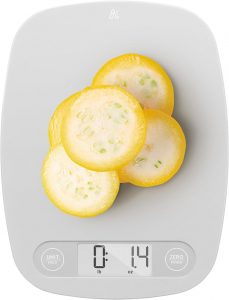
Your garden may be bursting with freshness, but how do you determine how much money you are saving? In order to do this, I recommend purchasing an inexpensive scale to measure your produce. You can then convert your bounty into profit if you research the cost per pound of the food items.
By systematically measuring the food you produce in your backyard, you gain valuable data to refine your gardening techniques, improve crop selection, and optimize the overall productivity of your space. This thoughtful approach ensures that your garden not only flourishes aesthetically but also provides a bountiful harvest for your table. My absolute favorite is the inexpensive and digital scale by Greater Goods.
To make money growing food, it i recommended to start maintaining a detailed garden journal. Record the types of crops planted, the dates of planting, and any relevant observations. This journal serves as a valuable reference point for evaluating the success of each crop and understanding seasonal patterns. You will be able to look back at the journal to help you with future planting. Evaluate the performance of different varieties of the same crop. Some cultivars may outperform others in terms of yield, resilience, or flavor. Keeping track of varietal success allows you to make informed decisions about which varieties to prioritize in future seasons.
Another way to document your bounty is to estimate it. As your plants mature, observe and estimate the yield per plant. Track the number of fruits, vegetables, or herbs produced by individual plants. This estimation can provide a baseline for assessing the productivity of different varieties and adjusting your planting strategies accordingly and will help you make money growing food.
Quality matters as much as quantity. Assess the nutrient density of your produce by considering factors such as color, flavor, and overall health. Nutrient-dense crops contribute to a healthier diet and reflect the effectiveness of your gardening practices.
Diversify to Make Money Growing Food
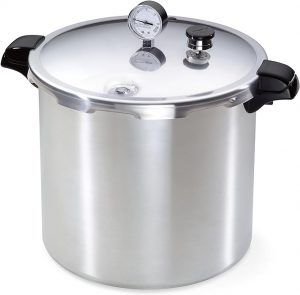
Diversifying your culinary repertoire and maximizing the utility of your harvest involves the art of transforming your fresh produce into value-added products. This culinary journey goes beyond the immediate satisfaction of consuming freshly picked fruits and vegetables; it introduces a realm of creative possibilities that enhance both flavor and longevity. By delving into the world of crafting jams, sauces, pickles, and dried herbs, you not only elevate your food variety but also unlock innovative avenues for saving money.
Delving into the world of value-added products introduces you to the age-old art of preservation. This is another way to make money growing food. Whether you’re making jams with seasonal fruits, sauces from ripe tomatoes, or pickles using homegrown cucumbers, you’re preserving the essence of your garden’s bounty. This skill not only contributes to sustainability but also equips you with valuable knowledge for reducing food waste. Check out the best selling Presto Pressure Canner and Cooker.
In essence, the journey of transforming your harvest into value-added products is a culinary adventure that extends the life of your produce, promotes financial savings, and invites you to explore the richness of diverse flavors. As you experiment with recipes and learn to make the most out of your homegrown treasures, you not only enhance your culinary skills but also elevate the overall experience of savoring the fruits of your labor.
Explore Urban Gardening and Vertical Farming
In the face of limited space, it’s essential to recognize that your gardening ambitions need not be stifled. Instead, embrace innovative solutions such as urban gardening and vertical farming to unlock the full potential of even the most confined areas. These forward-thinking approaches not only allow you to cultivate a thriving garden but also cater to the rising demand from urban consumers seeking sustainable, locally sourced produce.

Urban gardening involves strategically utilizing the available space in cities or densely populated areas for cultivating plants. Whether you have a small balcony, rooftop, or even a windowsill, there are creative ways to transform these spaces into productive green havens. Container gardening, raised beds, and hanging planters are popular techniques that enable you to grow a variety of herbs, vegetables, and even fruits in urban settings. There are a lot of great books about urban gardening techniques (my book for example!).
Vertical farming takes gardening to new heights—literally. By stacking plants vertically, you maximize the use of space and create a visually striking and efficient garden. Vertical farming systems can range from simple wall-mounted planters to sophisticated tower gardens. This approach not only capitalizes on unused vertical space but also offers a solution for cultivating a diverse array of crops in a small footprint. Check out the Mr. Stacky 5 Tier Stackable Strawberry, Herb, Flower, and Vegetable Planter on Amazon. Inexpensive and a practical way to fill some vertical space.
Hydroponics is a soilless cultivation method that uses nutrient-rich water to nourish plants directly. This technique eliminates the need for traditional soil, allowing for more compact and space-efficient setups. Hydroponic systems are adaptable to various urban environments, making them an excellent choice for those looking to grow food indoors or in limited outdoor spaces.
Aquaponics combines aquaculture (raising fish) and hydroponics to create a symbiotic ecosystem where plants and fish mutually benefit. The nutrient-rich water from the fish tanks nourishes the plants, while the plants filter and purify the water for the fish. This integrated approach not only maximizes space utilization but also provides a sustainable and resource-efficient method of food production.
Since we are talking about urban gardening tools, check out my post on using a grow tent. If you are serious about learning to make money growing food, you may need to step it up a bit by tryin a grow tent.
These innovative gardening techniques not only address spatial constraints but also align with the preferences of urban consumers who value sustainability and locally sourced produce. Urban gardens and vertical farming projects contribute to green urban spaces, improve air quality, and bring a touch of nature to city living. By exploring these approaches, you not only overcome the limitations of limited space but also join a growing movement towards more sustainable and localized food production in urban environments.
Conclusion
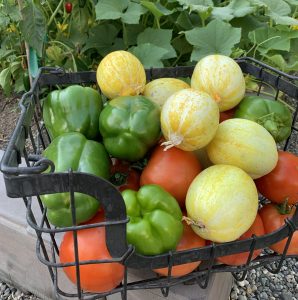
Embarking on the journey to make money by growing your own food is not just about cultivating crops; it’s about nurturing a sustainable and rewarding lifestyle. By carefully selecting your crops, marketing effectively, and exploring diverse revenue streams, your garden can become a flourishing source of income. So, roll up your sleeves, dig into the possibilities, and watch your passion for growing food transform into a fruitful financial endeavor. Happy planting and prospering!
Learning More about How to Make Money Growing Food
I wrote a book on growing food in your backyard. It is called Backyard Big: Growing Food in Your Backyard, and it provides all the details to grow your own food. Soil information, composting, fruit tree information, vegetables, and a month-by-month schedule of chores and growing tasks. You must check it out!
I also published Backyard Big: Growing Atlantic Giant Pumpkins in Your Backyard. These big guys don’t taste great, but they can earn you some money.
No tags for this post.